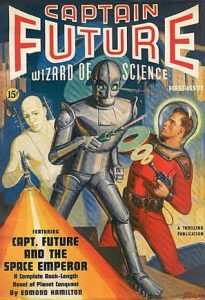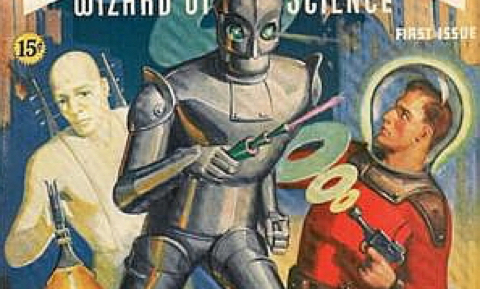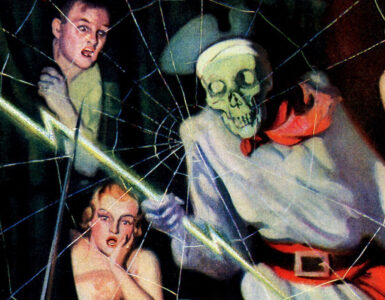 In addition to the explosive growth of the science-fiction pulp market, 1939 was also the year of the first World Science Fiction Convention. According to a story related by science-fiction scholar Sam Moskowitz, Standard Magazines’ editor-in-chief, Leo Margulies and Mort Weisinger came up with “a new idea in fantasy magazines” at the convention. It was Captain Future, a science-fiction hero pulp that premiered at year’s end.
In addition to the explosive growth of the science-fiction pulp market, 1939 was also the year of the first World Science Fiction Convention. According to a story related by science-fiction scholar Sam Moskowitz, Standard Magazines’ editor-in-chief, Leo Margulies and Mort Weisinger came up with “a new idea in fantasy magazines” at the convention. It was Captain Future, a science-fiction hero pulp that premiered at year’s end.
In actuality, Standard’s editorial staff had been batting around ideas for a science-fictional single-character magazine for months, even asking long-time pulpster Edmond Hamilton to work up something involving a “Mr. Future, Wizard of Science.” Eventually, the character evolved into Captain Future, a super-scientist headquartered on the Moon. In each issue of the pulp, Hamilton’s hero and his faithful assistants—known as the Futuremen—would save the solar system and, in later issues, the universe. Although action-packed and entertaining, the novels were juvenile space operas.
 Captain Future ran until the spring of 1944, surviving for seventeen issues with Edmond Hamilton writing fifteen of the lead novels. In 1945-46, three more Captain Future adventures appeared in Startling Stories. Hamilton wrote two of them and Manly Wade Wellman one. Seven shorter works followed in 1950, all of them written by Hamilton for Startling Stories. In the late sixties, Popular Library reprinted thirteen of the Captain’s adventures in paperback. Specialty publisher Haffner Press is currently collecting the entire series in hardcover.
Captain Future ran until the spring of 1944, surviving for seventeen issues with Edmond Hamilton writing fifteen of the lead novels. In 1945-46, three more Captain Future adventures appeared in Startling Stories. Hamilton wrote two of them and Manly Wade Wellman one. Seven shorter works followed in 1950, all of them written by Hamilton for Startling Stories. In the late sixties, Popular Library reprinted thirteen of the Captain’s adventures in paperback. Specialty publisher Haffner Press is currently collecting the entire series in hardcover.
To learn more about the images used in this post, click on the illustrations. Click here for references consulted for this article.
Captain Future has proved very popular throughout the world with an animated television series being produced in Japan and exported to other nations. Additionally, there have been hundreds of comic books featuring the characters published in both French and German. Captain Future figurines, models, board games, drinking glasses, and other merchandise have also appeared.







